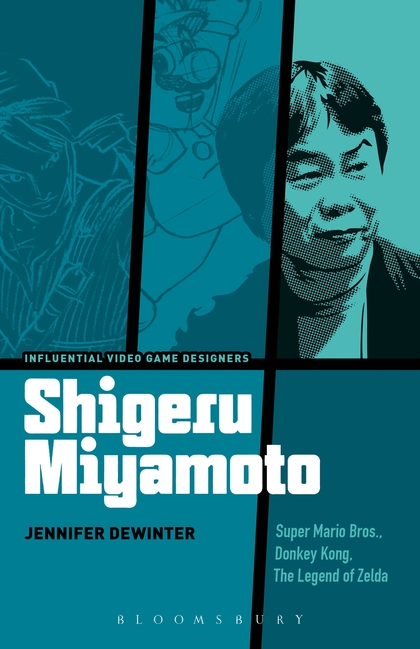Shigeru Miyamoto: Book Review
October 7, 2015 · 0 comments
If you’ve ever touched a games console there’s a good chance you’re at least familiar with Shigeru Miyamoto, one of the industry’s genius game designers and the man responsible for everyone’s favourite athletic plumber, Mario. But did you know that his design process comes from a thoroughly Japanese appreciation of nature; and that despite his eccentric looks and artistic tendencies, he’s actually qualified in Industrial Design?
Reading Influential Video Game Designers – Shigeru Miyamoto by Jennifer deWinter is more than an education on the man himself; it’s an in-depth, scholarly look at his game design credentials, his influences, business relationships and design process. As the first book in a new series on the people behind the industry’s most beloved franchises, Influential Game Designers has to work hard to distinguish itself from other games criticism, but in focusing wholly on one person, it does so with aplomb.
I can now deeply appreciate how much of Miyamoto’s game design inspiration comes from the concept of “play”, or “asobi”, an idea that playing is not only for children but adults, too: basically, any non-serious work that an adult does is considered play in worlds of Miyamoto’s designs. It really makes you think about all Mario and Luigi’s princess-rescuing, mushroom-stomping escapades (skives?) in a whole new light. And if a book can make that particular age-old franchise seem fresh and exciting, it’s definitely doing something right.
One thing to note about the book is that its attempt to appeal to a rather wide audience – from gamers to industry professionals to game academics – sometimes forces it to read like a list of obscure reference material organised into sentences. It doesn’t ever stray too far down the academic rabbit-hole, but there were points where I found myself wondering if referencing Aoi Sekai no Chuushin de (you know, that Sega vs. Nintendo anime) in a serious context was putting academic argument just a little too much on the zany side.
The real treasure of the book is, in my opinion, the “gameography” section towards the end, which attempts to combine Miyamoto’s standard credits (game designer, for example) with the less easily translatable roles he’s taken within Nintendo’s company structure; i.e., his tenures as kacho and bucho, or section chief and department chief respectively. Now, we’ve all heard of his legendary ownership of the Mario and Zelda franchises – and to a lesser extent, Pikmin and Kirby – but have you heard of the masterpiece that is Hamtaro: Ham-Ham Heartbreak?
At 0.14 million sales worldwide, it’s a game that proves that not even the untouchable Miyamoto is immune to the odd misstep. Fun titbits of information like these distinguish Influential Game Designers from other games criticism (which often just looks to prove that the author knows the most about gaming) and shows that author DeWinter has really done her research, even if it does get wacky.
Overall, this volume of Influential Game Designers is an enjoyable academic foray into Miyamoto’s auteur, and it’ll be interesting to see who will be next to get the star treatment. Who do you think? My money’s on someone like Hironobu Sakaguchi, of Final Fantasy fame, or for a more Western analysis, Will Wright of the Sims series. Whoever they are, I hope they’re prepared to have their every creative move analysed, which this book does with admirable relish.

Leave a Reply